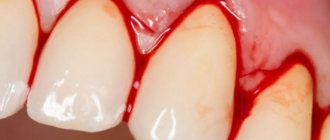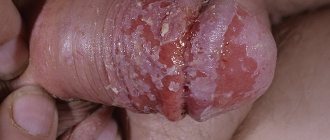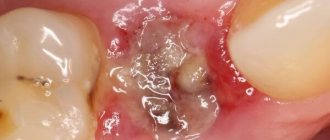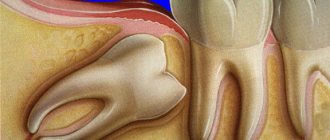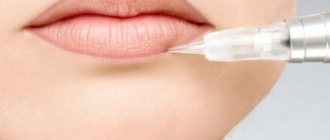The main factors contributing to the development of edema – changes in the biochemical composition of blood plasma and tissue fluid, hormonal changes, increased capillary permeability, difficulty in the outflow of venous blood and lymph, impaired gas exchange and excretory function of the kidneys, congestion in heart failure, sedentary lifestyle and critical ischemia, when a person is in pain forced to sleep with one leg down.
True edema can be local and general. With general edema, fluid accumulates throughout the body; with local edema, it lingers on the diseased area of the body. Each of these two species has many varieties. Let's look at the main ones.
Ways to get rid of bruises
Most often, the appearance of a bruise is preceded by a strong blow, which cannot be ignored. This injures small vessels, a small amount of blood flows out of them and permeates the subcutaneous tissue and lower layers of the skin. In response to injury, local swelling occurs - a protective reaction of the body. At this stage, the bruise is not yet visible, but you already need to take active action. The goal is to reduce tissue permeation with blood.
In order to quickly reduce swelling at the site of a bruise, it is necessary to use agents that cause vasospasm. Cooling with ice works well for this, but a frozen piece of meat wrapped in film and a thin towel will also work. It must be applied to the site of injury for 20 minutes. After cooling, the ice is removed, but the procedure can be repeated after 15-20 minutes. Constantly keeping the cold near the bruise is dangerous and can cause even more damage.
Home remedies can help relieve swelling. For this you can use:
- a compress made from a solution of vinegar or vodka;
- onion gruel with salt;
- applying a cut aloe leaf;
- half a raw potato.
Folk remedies against bruises can be used at an early stage, immediately after a bruise. A mixture of garlic and vinegar pulp and lavender essential oil, which should be applied to the injury site, are considered effective. But you need to be careful; minor bruises can be treated at home without the help of a doctor.
Why do you swell after alcohol: the main reasons
Swelling is always a sign of problems in the body. If a person is looking for an answer to the question of why you swell after alcohol, first of all he needs to study the effects of alcohol on the body. This substance affects all organs and systems, so even the main causes of swelling can be named. Among them:
- Impaired metabolism . The pathology may occur initially and worsen under the influence of alcohol.
- Fluid retention , or its excessive intake into the body, as happens with excessive consumption of beer, for example. A delay can occur when the kidneys malfunction, or when it is impossible to process toxins produced by the decomposition of alcohol.
- Vitamin deficiency . With systematic consumption of alcohol, vitamins are absorbed worse.
- Cardiovascular pathologies. When they appear, the legs and arms swell. Other accompanying symptoms may occur.
- Infections . With alcoholism, immunity decreases and a person may be prone to colds. Infections of the nasopharynx or oral cavity cause long-term swelling and pain.
- Lack of sleep, chronic fatigue. All this also often accompanies binge drinking, causing swelling, drowsiness, and redness of the eyes.
- Allergies, Quincke's edema . Develops quickly and can be fatal. Requires immediate medical attention.
What to put on a bruise
In order for treatment for a bruise to be effective, it is necessary to take into account the time that has passed since the injury. The formation of a hematoma goes through several stages. Immediately after the injury, agents are used that relieve swelling. At home, at an early stage, you can use folk remedies, but after that, purchase pharmaceutical drugs.
On the first day, you can apply ointment or gel containing heparin to the bruise. It helps reduce swelling by increasing the speed of blood flow. Heparin is well absorbed through the skin, thins the blood and prevents the formation of a hematoma. Therefore, treatment of the bruise will proceed quickly.
But when using heparin, you need to remember that it is not recommended to use it in the first hour or two after a bruise. It can increase bleeding at the injury site and cause an enlarged hematoma.
If a soft tissue injury is accompanied by pain, it can be reduced with the help of non-steroidal anti-inflammatory drugs. Quickly relieve discomfort with a gel or ointment that contains diclofenac, ibuprofen or piroxicam. They can be applied to the impact site after a few hours.
After a day, these remedies for treating bruises are no longer effective. Blood permeates the tissues, coagulates, and its cells are destroyed. Therefore, the bruise turns blue due to the protein hemoglobin. From this moment, its disintegration and hematoma begins to bloom. She herself will not be able to pass in a short time until all hemoglobin is destroyed into bilirubin.
We need products that resolve bruises by heating the tissues and increasing blood flow in them. You can use dimethyl sulfoxide creams or ointments at home without a doctor's prescription. This substance is obtained from hot peppers, so it has a warming effect. Minor bruises after using it disappear within 2-3 days.
How to eliminate swelling after alcohol?
Having learned in detail about swelling after alcohol and how to get rid of it, you can ask yourself one more question. Is it possible to make it not appear at all? There is a certain list of measures that will minimize this risk. Although, of course, it cannot be completely excluded.
If you would like to avoid such a problem , you should follow these rules:
- Choose alcohol of decent quality.
- Do not eat salty foods at feasts.
- Take contrast showers and drink mineral water before drinking alcohol, on the day of the upcoming event.
- Use sorbents.
- Do not drink alcohol if you experience frequent and severe swelling.
It is also worth following a light diet the day after drinking alcohol. This will also help the body recover faster. It is worth remembering that the most severe swelling occurs from beer. It’s also worth knowing that women are most prone to swelling. Thus, in former alcoholics, these manifestations do not go away even if they are coded and completely stop drinking.
Swelling can last a lifetime. And besides, this symptom may hide severe disturbances in the functioning of the body. If there is constant severe swelling, you should consult a doctor and undergo an examination. And it would be even wiser to reconsider your attitude towards alcohol and lifestyle.
How to quickly remove a bruise on your face
A black eye appears much faster than in other parts of the body. If measures are not taken quickly, the resorption of the bruise will take a long time. The reason is the location of the vessels and the loose subcutaneous tissue that surrounds the eyes. It easily becomes saturated with blood and swells.
First aid after injury is to apply ice to the face. Of the folk methods of struggle, it is necessary to use safe ones that will not irritate the mucous membrane of the eyes. Therefore, a paste of onion, vinegar or garlic will not work. But you can use:
- raw potatoes;
- parsley paste;
- a piece of raw pineapple (not canned);
- essential oils.
They are also treated with pharmaceuticals containing heparin, diclofenac and ibuprofen. Bruises on the face can be smeared with gel with troxevasin. It reduces swelling, pain, relieves inflammation, increases capillary tone and reduces their fragility. Troxevasin helps to quickly remove bruises and strengthen small blood vessels. It is recommended to use it 2-3 times a day.
If the bruise is large and does not want to dissolve, you can try to hide it with the help of cosmetics. Women apply a special color corrector to the defect on the face, which covers the blue tint, after which the skin is smoothed with foundation and powdered.
General swelling
Pulmonary heart failure. Under the influence of gravity, edematous fluid accumulates in the lowest part of the body. In bedridden patients, these are the areas of the sacrum and lumbar region. Associated symptoms are shortness of breath, swelling of the neck veins, congestive liver, ascites, hydrothorax and other signs of pulmonary heart failure.
Kidney diseases
With glomerulonephritis, pyelonephritis and other kidney diseases, swelling forms first on the face (on the eyelids), and then on the limbs and torso. With the development of nephrotic syndrome, edema can gradually spread to the entire body, including serous cavities (in this case they speak of edematous syndrome).
Cirrhosis of the liver
In addition to edema, there are other signs of liver cirrhosis - ascites, dilation of the esophageal veins (as determined by EGD), bleeding from the esophagus, dilation of hemorrhoidal veins, and liver failure.
Exhaustion
Edema of a similar origin occurs during fasting, alcoholism and some diseases of the gastrointestinal tract, accompanied by accelerated excretion of proteins from the body. The legs and feet swell, the face becomes puffy (protein-free edema).
How to quickly remove bruises on legs
First aid for a bruise on the leg is a cold compress. This can be done by soaking a cloth in water mixed with vinegar or alcohol. Due to rapid evaporation from the surface of the skin, they remove the tumor or prevent it from forming.
To avoid having to wait for the hematoma to heal, you need to lie down and raise your leg above the level of your heart. This will speed up the flow of blood from the limb and prevent it from swelling. Ointment with heparin, painkillers and troxevasin also effectively resolve the bruise.
There are hardware methods that help heal bruises. In cosmetology clinics they are treated with a laser. Irradiation of a tumor causes tissue heating and accelerates the breakdown of hemoglobin. You can remove a small hematoma at one time, but a large one will only change color. The disadvantage of this treatment is its high cost.
Local swelling
Varicose veins. Swelling (usually in the lower third of the leg, bilateral, but sometimes asymmetrical, more pronounced on the affected side) occurs in people who have suffered from varicose veins for a long time. It appears after standing for a long time and goes away in the “lying down” position with raised legs. Varicose veins are clearly visible, which helps make a diagnosis.
Deep thrombosis and saphenous vein thrombophlebitis
Swelling of the limb due to blockage of the veins by blood clots occurs after childbirth, surgery on the abdominal organs, with a tumor, leukemia and some other diseases. In acute thrombosis and thrombophlebitis, swelling is often one-sided, appears suddenly, increases and subsequently becomes permanent. Characteristic symptoms of pain are revealed. With thrombophlebitis, local compaction and hyperemia of the limb occurs along the affected vein.
Postthrombophlebitic syndrome
First appearing with venous thrombosis, edema is constantly present. It is often unilateral and can involve the lower leg and thigh. After a few years, varicose veins of the affected limb, characteristic pigmentation, compaction of subcutaneous fatty tissue and trophic skin disorders (venous dermatitis and eczema, trophic ulcers) may appear.
Lymphedema
The feet and legs swell; in the last stages of the disease, the thigh may also swell. The lesion is often unilateral. Swelling at the initial stage of the disease is temporary, then becomes permanent. In advanced cases, the swelling becomes very dense, fibrous growths appear on the skin of the feet and legs. The triggering factor may be repeated erysipelas, oncological diseases of the intestines and pelvic organs, bacterial and parasitic lesions of the lymph nodes of the groin area.
The combination of lymphedema with varicose veins is called phlebolymphedema. Swelling is often bilateral, and there may be trophic ulcers on the skin.
Joint diseases
With diseases of the joints and flat feet, the area close to the affected area swells.
Brain diseases
In case of a brain tumor, encephalitis and other diseases of the central nervous system, accompanied by paralysis of a limb, there may be swelling on the side of the paralysis due to impaired muscle contractility and paresis of peripheral vessels (persistent dilation).
Injury
When injured, small blood vessels rupture, causing a hematoma. The affected area swells. Cerebral edema is especially dangerous due to traumatic brain injury.
Idiopathic orthostatic edema
When translated into “ordinary” language, the term means that the cause of this type of edema has not been established and it appears when a person is in an upright position. Mostly young women suffer; temporary swelling occurs in the lower part of the legs.
Edema in obliterating atherosclerosis
Edema develops as a result of an increase in pain in the patient when his legs are in the “lying” position. Critical ischemia develops. The patient is forced to lower the affected limb(s) from the bed to relieve pain, since at this stage of atherosclerosis painkillers no longer help. The only way to sleep without pain is a forced position with your legs lowered from the bed. As a result, a stagnation process develops in the limb and swelling occurs.
Medicines for bruises
Major injuries are accompanied by severe pain, which is difficult to relieve with local remedies. Therefore, soon after injury, you can take painkillers orally based on:
- nimesulide;
- diclofenac;
- indomethacin;
- ibuprofen;
- ketorolac.
They help relieve pain, reduce swelling and inflammation.
Sometimes hematomas appear due to increased fragility of blood vessels, so it is necessary to use agents to strengthen the capillaries against them. Riboxin and complexes containing vitamin C and ascorutin help with this.
It is difficult to remove blueness under the eyes that is not associated with injury. It appears due to kidney pathologies or due to the proximity of blood vessels under the skin. In this case, it is necessary to eliminate the cause, apply cooling compresses before bed or apply special patches.
Pharmacy products
After the party, you can use medications to eliminate swelling and improve your well-being. To remove excess fluid from the body, you need to take diuretics. Most swelling occurs after drinking beer, not vodka or whiskey. Only a small part of the water is excreted in the urine immediately, and the main volume accumulates. Various salty snacks such as taranka, chips and other snacks enhance the effect.
To eliminate severe swelling, you can take the following medications in the morning:
- Hypothiazide;
- Diacarb;
- Trigrim;
- Veroshpiron.
A single dosage of these drugs is half a tablet. You should not drink more, otherwise the effect of dehydration will increase. To avoid disruptions in the water-salt balance, it is necessary to take solutions of Regidron or Gidrovit along with diuretics. They contain minerals and glucose - substances that are necessary to restore physical and mental activity.
A popular and affordable drug that can be bought at any pharmacy, narcologists do not recommend taking . This drug helps remove potassium from the body, and this increases trembling of the hands and the appearance of cramps in the legs. The rest of the previously listed remedies retain potassium, therefore they are more favorable for the cardiovascular system and the whole body.
It is also useful to use sorbents. They will ensure rapid removal of toxic compounds from the body and cleanse the liver. This is a large list of drugs. You can choose activated carbon, proven for centuries, or more modern options: Enterosgel, Atoxil, Smecta, Polysorb.
What happens when you get hurt
Many people mistakenly consider a bruise to be a harmless injury. In fact, it can be dangerous, especially if it affects internal organs.
A bruise is damage to soft tissues without significant destruction of their structure. In this case, the vessels burst, from which fluid is released into the interstitial space, where it accumulates.
Based on the degree of tissue damage, there are:
- Minor damage that goes away on its own.
- Bruised muscle tissue with hematoma and swelling, very painful.
- High probability of tendon damage.
- Contusion of internal organs with severe swelling and severe pain.
If you suspect a bruise, you need to make sure that there is no fracture, so you need to contact a traumatologist.


